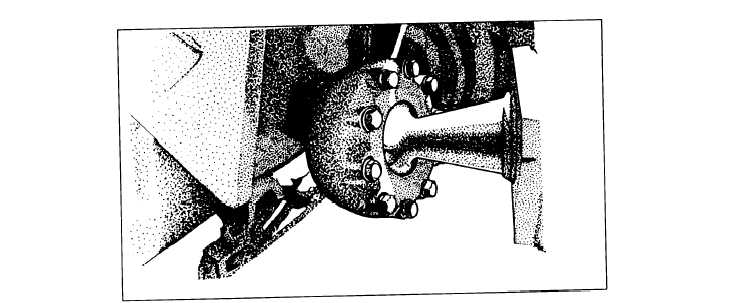Figure 10-10.-Drawbar.
Figure 10-11.-Ball-and-socket connection.
off the heel. When the toe of the blade is to your right,
the material will side cast to the left and spill off the heel.
The moldboard is supported and held in position
by curved brackets, called circle knees and side shift
guides, as shown in figure 10-6. They are attached to
the underside of a rotatable ring, called the circle.
Cycle
The circle is a tooth-ring gear that is rotated in a
supporting frame by the circle reverse mechanism. The
circle teeth may be internal (fig. 10-8, view A) or
external (fig. 10-8, view B), depending on the make and
model of the grader.
The circle is turned by a spur-pinion gear (fig. 10-9)
that meshes with the circle teeth. The spur-pinion gear
is held by the drawbar and is controlled by a lever in
the operator’s cab. Engaging the spur-pinion gear allows
rotating the circle to the desired blade angle position.
Drawbar
The drawbar is a V- or T-shaped connection
between the front of the grader frame and the circle (fig.
10-10). The drawbar holds the circle rigid and is
fastened by a ball and socket that allows angular
movement from side to side and up and down (fig.
10-11). The drawbar carries the full-horizontal load on
the blade. Other components provide vertical and side
support.
Scarifier
The scarifier is a hydraulically controlled unit with
a set of teeth used to break up material too compacted
10-5
~.--- --- yv . . v. “Uv..v.
-.*” “KXVUS8UA8XL AVLbb WA UIG



